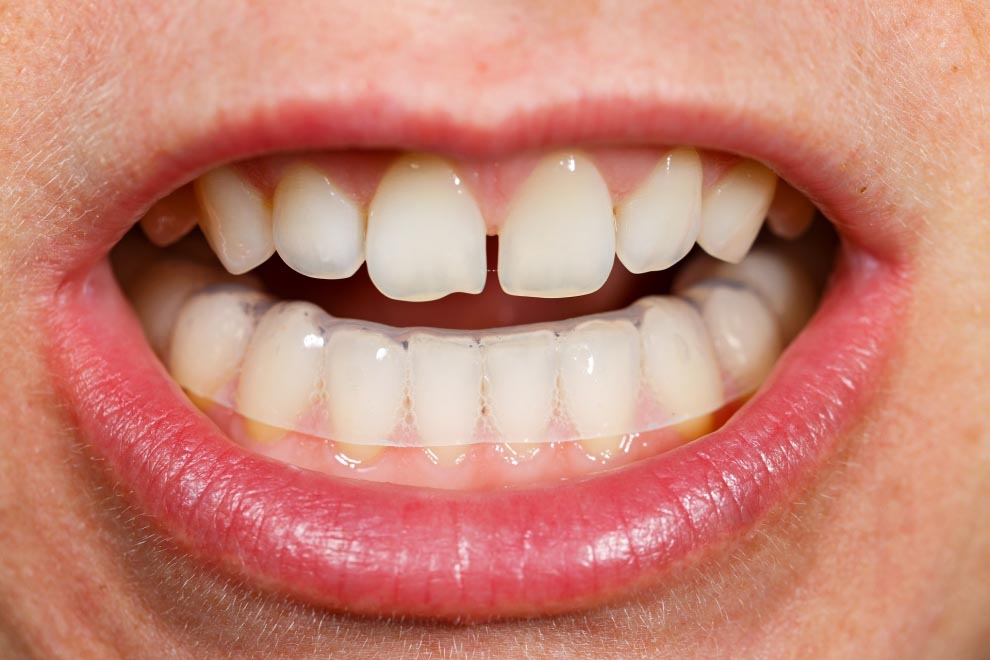2020
What is TMD, and how do you treat it?

TMD stands for Temporomandibular Disorder. It’s relatively common, affecting 25%-30% of the population, and refers to a number of conditions related to the jaw joint and surrounding muscles. Symptoms occur when chewing, swallowing, speaking, or yawning. It can cause tenderness, pain or problems opening and closing the mouth. Stress is a major contributor so it can have a big impact on your daily quality of life. The good news is our dentists in North Surrey offer a few treatment options to help those suffering from TMD.
Causes of TMD:
- Overuse from excessive chewing, clenching or grinding your teeth
- Injuries to the jaw including breaks, dislocations, infections or inflammation
- Arthritis or other diseases affecting jaw joints
- Jaw or teeth misalignment
Effects of TMD:
- Limited ability to open or close the mouth all the way
- Locking, clicking or popping of the jaw joint
- Pain or tenderness in the jaw muscles and neck, unexplained headaches
- Difficulty chewing
Teeth grinding is often a problem, particularly at night. To help, we can fit you with a nightguard (aka bruxing guard) or splints. These are pieces of acrylic that sit between your teeth to protect them and ease muscle tension. If all else fails, there is surgical treatment available for which we can provide a referral.
Treatments for TMD:
- Identify and manage stressors
- Relax your jaw and resist clenching or grinding your teeth
- Massage sore jaw muscles and apply hot or cold compresses
- Wear night guards or occlusal splints to protect your teeth at night
- Seek a referral for surgical treatment